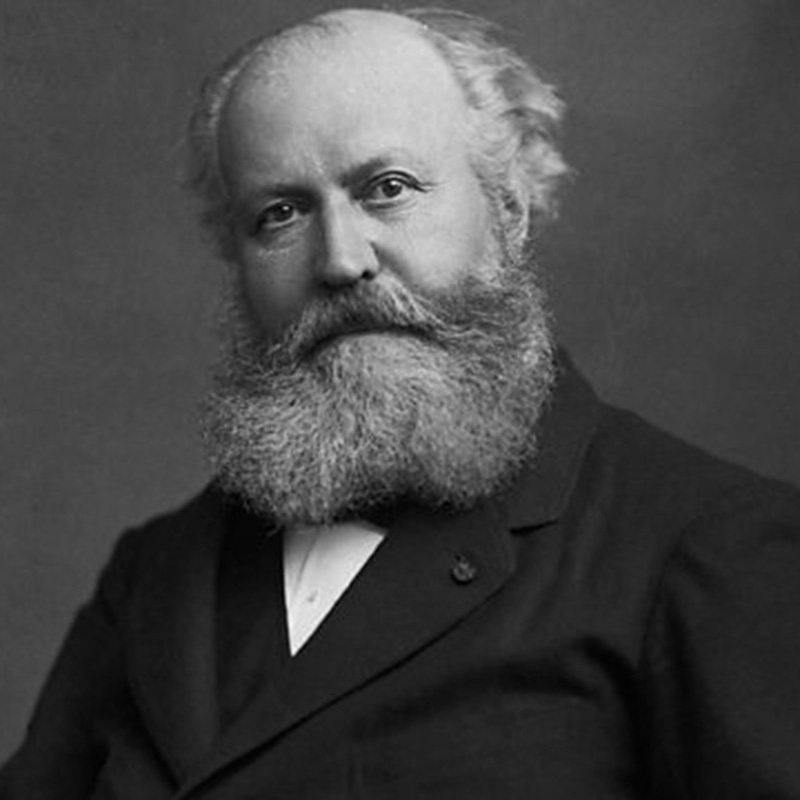Charles Gounod

- Born: June 17, 1818, Paris
- Died: October 18, 1893, Saint-Cloud (near Paris), France
Petite symphonie
- Composed: 1885, dedicated to the Society for Chamber Music for Wind Instruments
- Premiere: April 30, 1885, at the Salle Pleyel in Paris, France, played by flutist Paul Taffanel, oboists Georges Gillet and Alfred Boullard, clarinetists Charles Turban and Prosper Mimart, hornists Jean Garigue and François Brémond, and bassoonists Jean Espaignet and Adolphe Bourdeau
- Duration: approx. 17 minutes
Gounod is more familiar to audiences for his operas Faust (1859) and Roméo et Juliette (1867), as well as his setting of the Ave Maria text with J.S. Bach’s C Major Prelude as the accompaniment, than he is for his chamber music like the Petite symphonie.
He also was deeply religious. While at the French Academy in Rome, Gounod heard performances of Palestrina’s music and was deeply moved. He was also drawn into the circle around Jean-Baptiste Henri-Dominique Lacordaire, a member of the Dominican Order who was touted as the greatest pulpit orator of the 19th century. Gounod’s mother became concerned that Charles would enter the priesthood, which he did consider in 1847 when he enrolled in the St. Sulpice seminary. Why he didn’t finish his priestly education is mostly unknown, but rumors of a faked faith and extra-marital affairs abound. Nevertheless, Gounod, as one annotator writes, “produced a small ocean of sacred compositions, including three oratorios and 21 masses.”
Gounod wrote his Petite symphonie late in his life, after he had gained fame as a composer of opera and sacred music. He had written two symphonies (in 1855/1856) but their success was short lived. This “little symphony” owes its creation to two primary factors: technical advances in instrument manufacturing and a personal connection to Paul Taffanel.
The woodwind family of instruments, in particular, benefited from advancements in instrument design. Theobald Boehm (1794–1881), credited with perfecting the modern Western concert flute, made improvements to the flute’s fingering system (still in effect on today’s flutes), allowing for greater dynamic range and improved intonation. Inspired by Boehm and based on his principles, Hyacinthe Klosé (1808–1880) worked with Louis-Auguste Buffet to employ similar key work on clarinets. Guillaume Triébert (1770–1848) and his sons Charles and Frederic used Boehm’s ideas to improve the key work of the oboe, which F. Lorée continued to develop into the late 19th century. Boehm’s work on the flute also inspired changes to the bassoon. With all these improvements, by the late 19th century woodwind instruments were much more stable in intonation, capable of a larger dynamic range, and had increased technical facility than their earlier century counterparts. The technical advances in the instruments themselves afford the composer a more robust palette of colors to explore and the ability to feature virtuosic displays throughout the nonet configuration.
Paul Taffanel was the leading flute player of his day and developed the primary French school of playing and teaching. In 1879, Taffanel founded the Société de Musique de Chambre pour Instruments á Vent (The Society for Chamber Music for Wind Instruments), and its concert ensemble, La Trompette, which he directed for 15 years. This Society created a need for new pieces to be written for wind chamber groups. Taffanel asked his friend Gounod for such a piece and Gounod responded with Petite symphonie.
For Petite symphonie, the woodwind octet (2 oboes, 2 clarinets, 2 bassoons and 2 horns) was expanded to include a flute for Taffanel to play. The form follows the basic structure of a classical four-movement symphony but tinted with Romantic harmony, operatic melodies and virtuosic displays.
—Tyler M. Secor